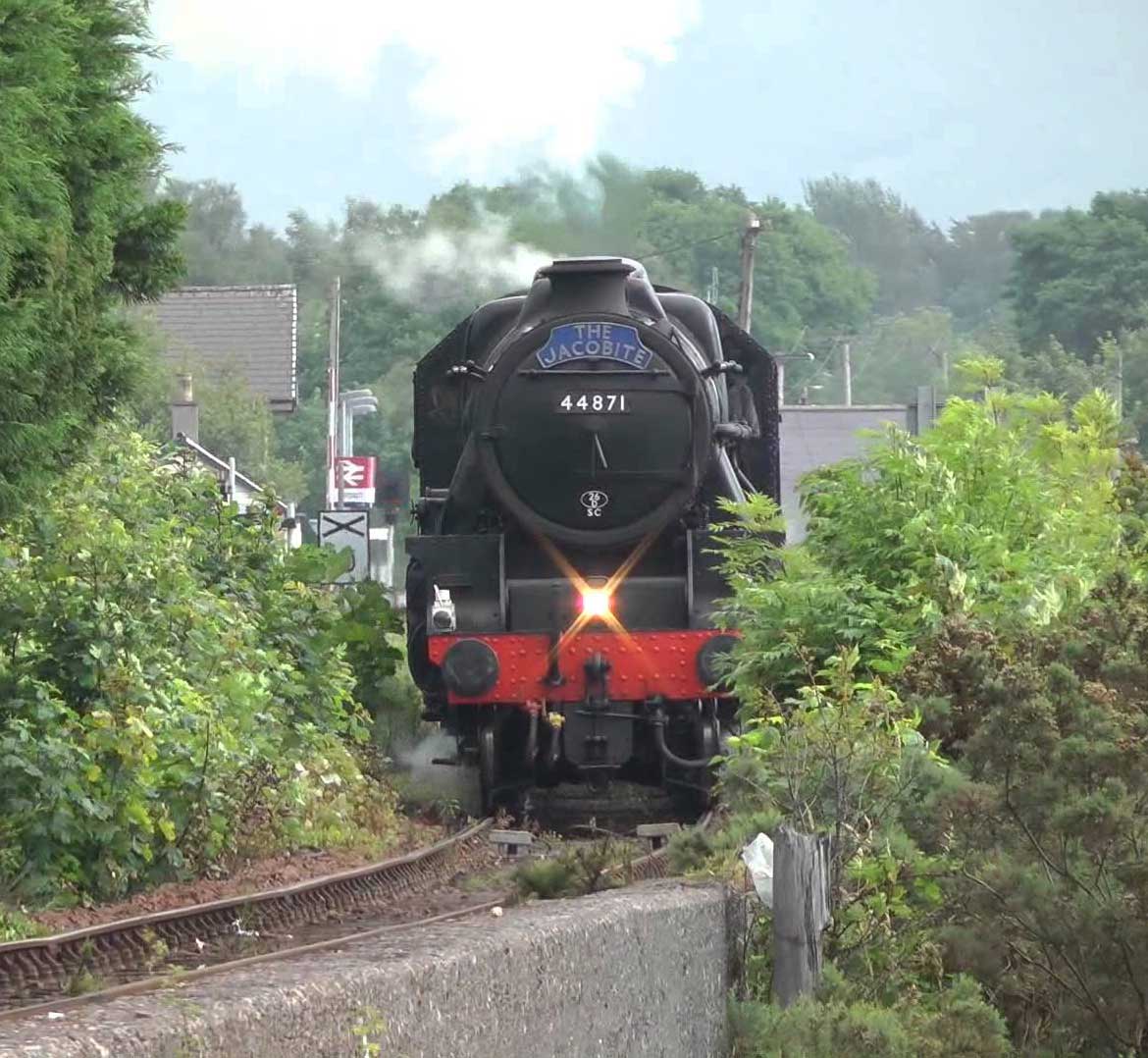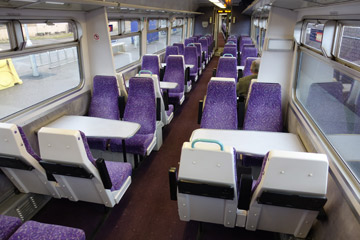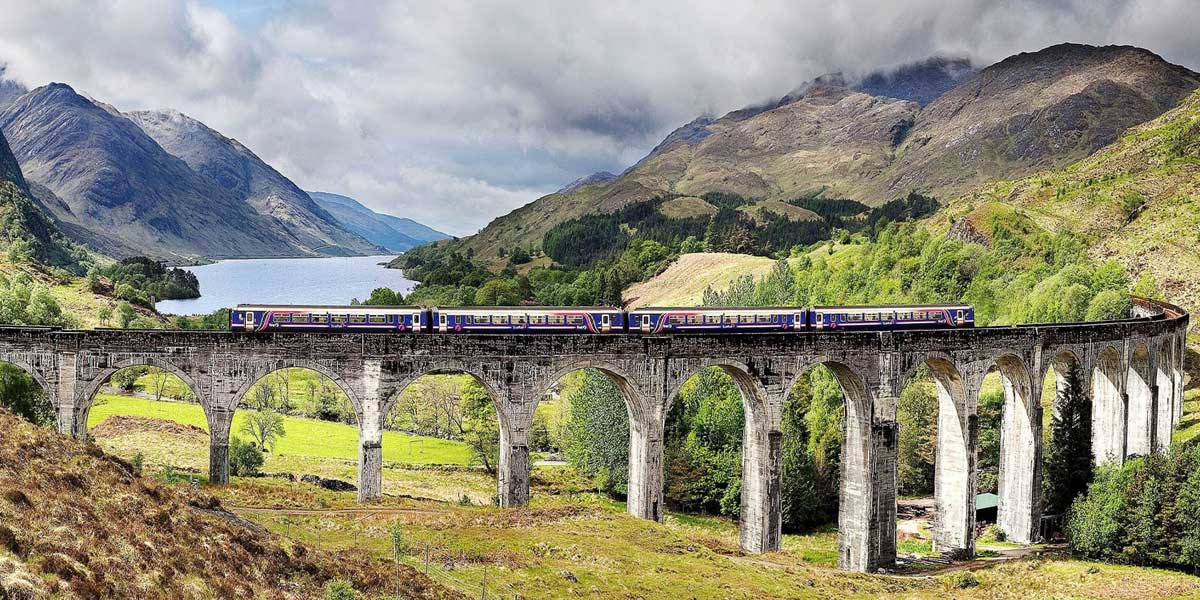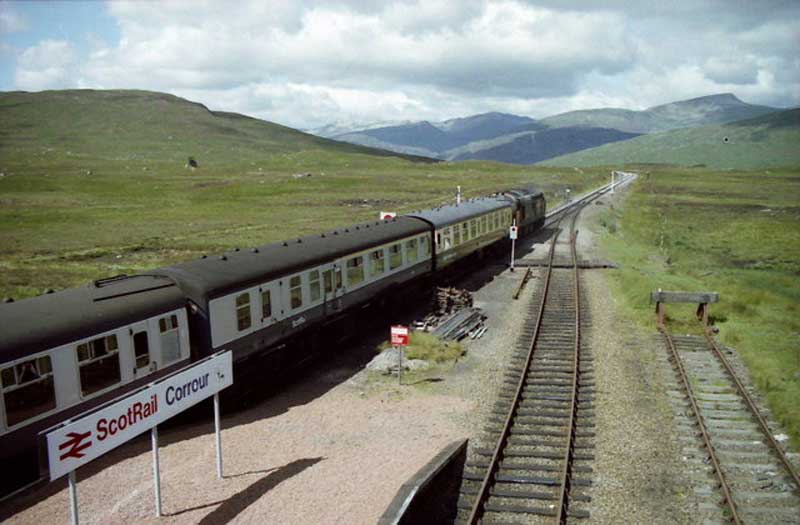West Highlnd Line, Scotland

One of the most popular and scenic train trips in Europe (and possibly the world), the West Highland Line links the major ports in Scotland to Glasgow, and takes just over 5 hours from one end to the other. The West Highland Line features journeys from Glasgow to Fort William, known as the outdoor capital of the UK, and Glasgow to Mallaig where the train crosses the Glenfinnan Viaduct, famous for being featured in the Harry Potter movies. In addition you can travel to Oban, via Crianlarich. The West Highland Line provides impressive views including the Erskine Bridge, Dumbarton Castle, glimpses of the Arrochar Alps and more.
The line splits some 40 miles north of its starting point in Glasgow and offers two wonderful trips, carrying travellers either across to the west coast and Oban, or northward to Fort William and Mallaig.
Train Frequency: - 6 trains each day from Glasgow to Oban. 3 trains each day from Glasgow to Mallaig via Fort William.

The Route

During the summer season from May until October a steam locomotive-hauled daily return service between Fort William and Mallaig known as "The Jacobite" is operated by West Coast Railways. There is usually one train a day but this is increased to two trains from June until the end of August.
Onward ferry connections operated by Caledonian MacBrayne are available from Mallaig to the Isle of Skye, to the small isles of Rum, Eigg, Muck, and Canna, and to Inverie on the Knoydart peninsula. From Oban ferries sail to the islands of Lismore, Colonsay, Coll, Tiree, Mull, Barra and South Uist.
Leaving Glasgow, you'll be amazed by how quickly the urban landscape is replaced by lush glens, soaring hills and tranquil, contemplative lochs. You'll skirt along the banks of the River Clyde, passing Dumbarton and Helensburgh before following the Gare Loch to the town which bears its name. The route then turns inland again, travelling by Loch Long towards a rendezvous with the northern edges of Loch Lomond. Take in wonderful south-facing views across the water as you make the short hop to the north east and Crianlarich where the line divides.
Westward to Oban...
Through the stunning Glen Lochy, you'll pass Kilchurn Castle as you begin a scenic sweep along the north edge of Loch Awe, an edge defined by Ben Cruachan's imposing majesty.
As you leave the loch behind, the track will take you along the banks of the River Awe, and towards Loch Etive, along whose southern shore you'll complete your journey. Passing the town of Connel you'll see the Falls of Lora as Etive narrows and the sea tides are compressed into frothing rapids.
And then beyond the Connel Bridge and to Oban itself, where ferries await to transport you across the sea to the islands of the Inner and Outer Hebrides.
...or North to Mallaig
Striking upwards from Crianlarich you'll find no shortage of spectacle, with the remarkable Horseshoe Curve bending dramatically to the east and west before resuming the northward journey.
Bridge of Orchy offers sightseers a gateway to Loch Tulla to the north, which your train will pass before traversing the incredible emptiness of Rannoch Moor, a wild open space with great hills and mountains on all sides.
You'll pass the UK's highest altitude train station in Corrour (scene of one of the most famous scenes featuring Ewan McGregor and friends in Trainspotting), savour the views along the length of Loch Treig and then turn sharply west towards Fort William, which you'll reach after passing to the north of the towering Ben Nevis, Britain's highest peak.
From Fort William you'll hug the bank of Loch Eil for almost six and a half miles before experiencing the iconic curve of the Glenfinnan Viaduct, immortalised by the Harry Potter films as part of the route to Hogwarts.
After enjoying the stark beauty of Lochs Eilt, Ailort and Nan Uamh you'll find yourself in yet another movie location as Morar's sandy shores glide into view, home to the characters of Local Hero. And before you know it, you'll have reached Mallaig where the views to the Isle of Skye will surely tempt you into taking the short ferry trip across to the island itself.
The Journey
Shortly after leaving Queen Street station in Glasgow, and beyond Queen Street Tunnel, the line diverges from the main trunk route to Edinburgh & Perth at Cowlairs and follows a northwesterly course through the suburbs of Maryhill and Kelvindale. Between Westerton and Dumbarton, the route is shared with the North Clyde Line to Helensburgh before branching northward at Craigendoran Junction towards Garelochhead, the section where the West Highland Line itself is generally accepted to begin.
It gives high-level views of the Gareloch and Loch Long before emerging alongside the northwesterly shores of Loch Lomond, then climbs Glen Falloch. Significant points on the journey include Crianlarich, an important Highland junction of both road and rail, and Tyndrum, the smallest place in Scotland, and the northernmost place in Britain, with two railway stations.
After Bridge of Orchy, the line climbs onto Rannoch Moor, past the former crossing point at Gorton Crossing to Rannoch station. In winter, the moor is often covered with snow, and deer may be seen running from the approaching train. The station at Corrour on the moor is one of the most remote stations in Britain and is not accessible by any public road.

Corrour Station
This is the summit of the line at 410 metres above sea level. Carrying on northwards, the line descends above the shores of Loch Treig and through the narrow Monessie Gorge. The final stop before Fort William is Spean Bridge. The section between Fort William and Mallaig passes over the Glenfinnan Viaduct, through Arisaig with its views of the Small Isles of Rum, Eigg, Muck and Canna, and the white sands of Morar before coming to Mallaig itself and the southern tip of Skye.
The branch to Oban diverges at Crianlarich, and runs through Glen Lochy to Dalmally and through the Pass of Brander to reach salt water at Taynuilt and Connel Ferry before a final climb over a hill to Oban.
Over much of the Rannoch Moor section the speed limit is 60 mph for the Sprinter and 70 mph on the approach to Rannoch station. The Caledonian Sleeper travels at 40 mph maximum, slowing down for a number of bridges on the route due to the heavy weight of the Class 67 locomotive which hauled the train until the end of the old franchise in April 2015. New sleeper operator Serco has replaced these with refurbished Class 73/9 electro-diesels since it took over, which have a lighter axle load; it isn't yet clear if the new locos will be cleared to run at higher speeds now they are in service.
Design by W3layouts
